Explore how fashion helps musicians build unique identities and make a lasting impression and how legends like The Beatles achieved iconic status through style
By Shambhavi
Introduction
Music has always been more than just a collection of notes and lyrics, just as vital is the visual image it projects. It’s an entirely sensory experience! Both serve as potent forms of self-expression and when combined, they have the power to define entire eras and movements. From punk’s rebellious leather jackets to hip-hop’s trendsetting streetwear, what musicians wear speaks volumes about who they are and what they represent. Similarly, whether it’s the glittering spectacle of David Bowie’s Ziggy Stardust persona or when Lady Gaga steps on stage in an unconventional avant-garde outfit, it’s more than just a fashion statement; it’s a visual extension of their music, reinforcing themes of individuality and pushing the boundaries of what’s expected. This is one of the most notable ways fashion plays a crucial role in defining music icons. This fusion of style and sound creates a powerful synergy, shaping how we perceive artists and deepening our connection to their work.
Fashion is not just a visual accessory to music; it’s a narrative tool that artists use to define themselves, their genre, and their place in the cultural zeitgeist. When synchronized with an artist’s music, it has the potential to build a subconscious image in the audience’s mind — an image that lingers long after the last note fades. This seamless integration of fashion and music not only helps artists stand out in a crowded industry but also solidifies their place in cultural history.
In this blog, we’ll journey across legendary musician’s careers, examining case studies of artists whose unique styles are inextricably linked to their music. We’ll explore how their fashion choices have crafted enduring identities, enhanced their musical narratives, and, ultimately, propelled their careers to new heights. From the bold to the understated, each example will highlight the undeniable influence of fashion on music, revealing how this partnership has become a powerful tool in shaping the trajectory of artists around the world!
The Power of Image in Music
Historical Context
Throughout history, fashion has been a powerful tool for musicians, helping them craft their public personas and communicate with their audiences. As early as the 1950s, Elvis Presley’s rebellious outfits, from his slick pompadour to his flamboyant jumpsuits, set the tone for the rock ‘n’ roll era, signaling a break from the conservative fashion of the time. In the 1960s, The Beatles’ transition from clean-cut suits to psychedelic, colorful attire mirrored the cultural shift happening worldwide, with their fashion choices reflecting the growing counterculture movement.
By the 1970s and 1980s, artists like David Bowie, Madonna, and Prince took the concept of fashion as a form of expression to new heights. Bowie’s constantly evolving looks, from the gender-bending glam of Ziggy Stardust to the stark, minimalist Thin White Duke, were not just costumes but extensions of the identities he created for each phase of his music. Madonna, who burst onto the scene in the 1980s, used fashion as a means of self-reinvention, her iconic “Like a Virgin” wedding dress and “Vogue” era corsetry becoming symbols of her provocative and ever-evolving artistry. Prince, meanwhile, challenged societal norms with his flamboyant and androgynous style, using fashion to blur the lines of gender and create a bold, unforgettable image.
Importance
The psychological impact of these fashion choices is profound. An artist’s style can shape how they are perceived by the public, creating lasting visual impressions that often become synonymous with their music. When audiences think of Michael Jackson, for instance, the image of his sequined glove or red leather jacket from “Thriller” comes immediately to mind; these are more than just fashion statements, they are integral to the iconography of his music.
Fashion also serves as a powerful branding tool, allowing artists to stand out in an increasingly competitive industry. In today’s visual culture, where images are consumed at lightning speed, a distinctive style can elevate an artist’s brand, making them instantly recognizable. Beyoncé’s powerful and symbolic attire in her “Lemonade” visual album, for instance, was not merely a complement to her music but a crucial part of the storytelling, reinforcing themes of empowerment and cultural pride. By cultivating a strong visual identity, artists not only enhance their music but also secure a lasting place in the cultural spirit.
Case Studies
Lady Gaga
Style Statement: Lady Gaga’s style is characterized by its avant–garde, boundary-pushing nature, often incorporating elements of haute couture, performance art, and exaggerated silhouettes.
Iconic Looks and Their Impact: Gaga’s infamous meat dress at the 2010 MTV VMAs was not just shocking, it was a commentary on consumerism and identity. Her use of sculptural, sometimes surrealist outfits by designers like Alexander McQueen and Giorgio Armani exalts her fashion to an art form, making her a symbol of fearless self-expression.
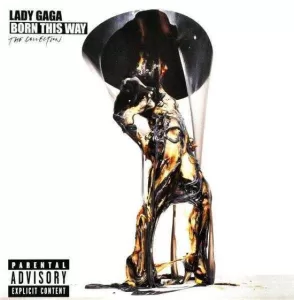
Born This Way: The Collection via bol

Chromatica album cover via Vogue
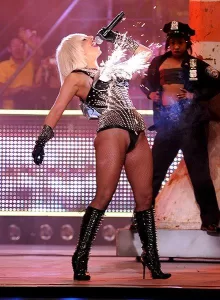
Music Representation: Gaga’s fashion choices amplify her music’s themes of defiance, liberation, and self-empowerment. The architectural, often non-traditional forms she dons, mirror her genre-defying sound, blending pop, dance, and electronic music with powerful vocal performances. Her fashion is as experimental as her music, creating a cohesive brand of avant-garde pop.
The Beatles
Style Statement: The Beatles’ fashion journey moved from mod-inspired suits to psychedelic, colorful ensembles, reflecting their musical evolution.
Iconic Looks and Their Impact: Early on, the band’s tailored suits and mop-top haircuts projected a clean, unified image that was crucial to their appeal during the British Invasion. Later, their Sgt. Pepper’s-era military–style jackets and vibrant attire marked a shift to more experimental music and a deeper engagement with 1960s counterculture.

The Beatles mop top & tailored suit via goldminemag.com
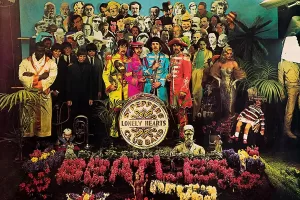
Sgt. Pepper’s Lonely Hearts Club Band album cover via Ultimate Classic Rock
Music Representation: The Beatles’ fashion mirrored their musical growth. From the polished, harmonious sounds of their early work to the eclectic, experimental tracks of their later years. Their shift to more individualistic and colorful fashion reflected their exploration of new musical panoramas, including psychedelic rock and Indian classical music, signaling their break from pop conventions.
Taylor Swift
Style Statement: Taylor Swift’s style evolution from country-chic to sophisticated pop princess is a testament to her ability to blend contemporary fashion with a nod to classic elegance.
Iconic Looks and Their Impact: Swift’s transition from vintage-inspired dresses and cowboy boots to high-fashion looks marked her shift from country to pop. Her “Reputation” era, characterized by dark, edgy fashion: think black sequins, snake motifs, and bold red lips signaled a period of personal and artistic transformation.

Country style via i.heat.com
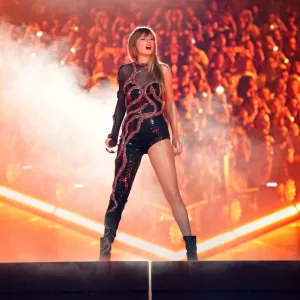
Reputation Era via Vogue
Music Representation: Swift’s fashion choices have consistently mirrored her music’s narrative arc. The whimsical, bohemian style of her “Folklore” and “Evermore” albums, with flowing dresses and muted tones, aligns with the introspective and poetic nature of these records, while her earlier, more polished looks echoed the smooth, radio-friendly sound of her country-pop era.
To know more about Taylor Swift’s prowess, read “The Genius Behind Taylor Swift”
Raja Kumari
Style Statement: A blend of traditional Indian elements with contemporary streetwear, reflecting her bicultural identity.
Iconic Looks and Their Impact: Raja Kumari’s use of bindis, saris, and gold jewelry combined with modern fashion pieces like bomber jackets and sneakers highlights her fusion of East and West. Her style challenges stereotypes and embraces cultural diversity.

via last.fm
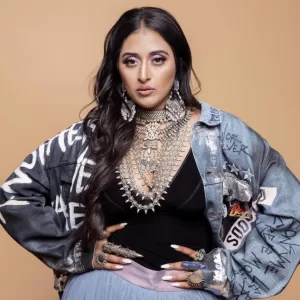
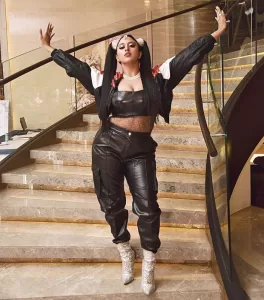
via Telegraph India
Music Representation: Raja Kumari’s fashion reflects her music’s blend of classical Indian sounds with contemporary hip-hop and pop beats. The juxtaposition of traditional and modern elements in her style mirrors the duality in her music, which celebrates her Indian heritage while embracing global, urban influences.
Iniko
Style Statement: Ethereal and futuristic, often incorporating bold prints, flowing fabrics, and unique accessories.
Iconic Looks and Their Impact: Iniko’s style is characterized by its otherworldly aesthetic, which sets them apart in the industry and complements their genre-defying music. Their fashion choices create a distinctive, almost mystical image.
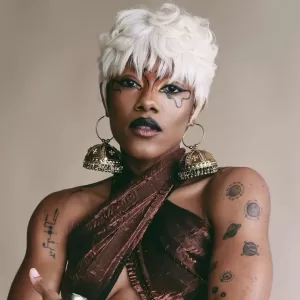
Jericho Acapella via last.fm
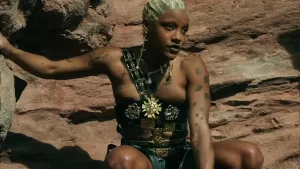
Invasion via Youtube
Music Representation: The fluid, almost intangible quality of Iniko’s fashion parallels their music, which defies traditional genre classifications by blending elements of soul, electronic, and alternative sounds. Their style, much like their music, is about creating a transcendent experience that transports the audience beyond the ordinary.
Parekh & Singh are also a great example for the said cause. The duo presents a polished, whimsical aesthetic inspired by vintage and retro fashions, often drawing comparisons to the cinematic styles of Wes Anderson.

via The Guardian
Their music, a blend of Western indie pop with Indian sensibilities, is perfectly complemented by their visually charming and nostalgically modern fashion choices.
To Conclude
A unique style statement is a powerful catalyst in defining an artist’s presence and impact within the music industry. By seamlessly blending fashion with music, artists create a lasting, multifaceted impression that not only elevates their brand but also ensures their place in cultural history. Whether through bold innovation or subtle symbolism, the synergy between style and sound remains a key to enduring success. As the industry continues to evolve, those who dare to fuse their musical and visual identities will not only grab people’s attention but also make a lasting impact on the cultural scene and maybe, become a legend!